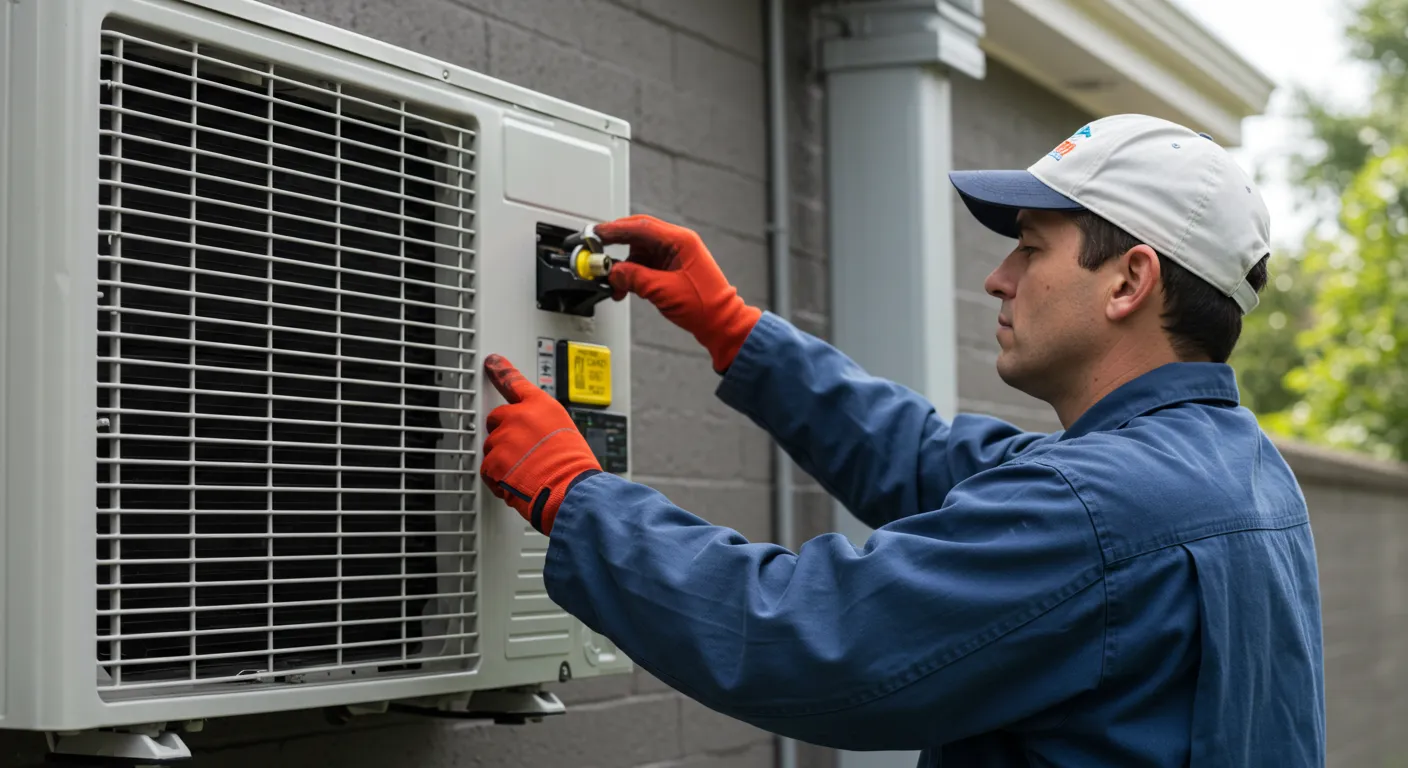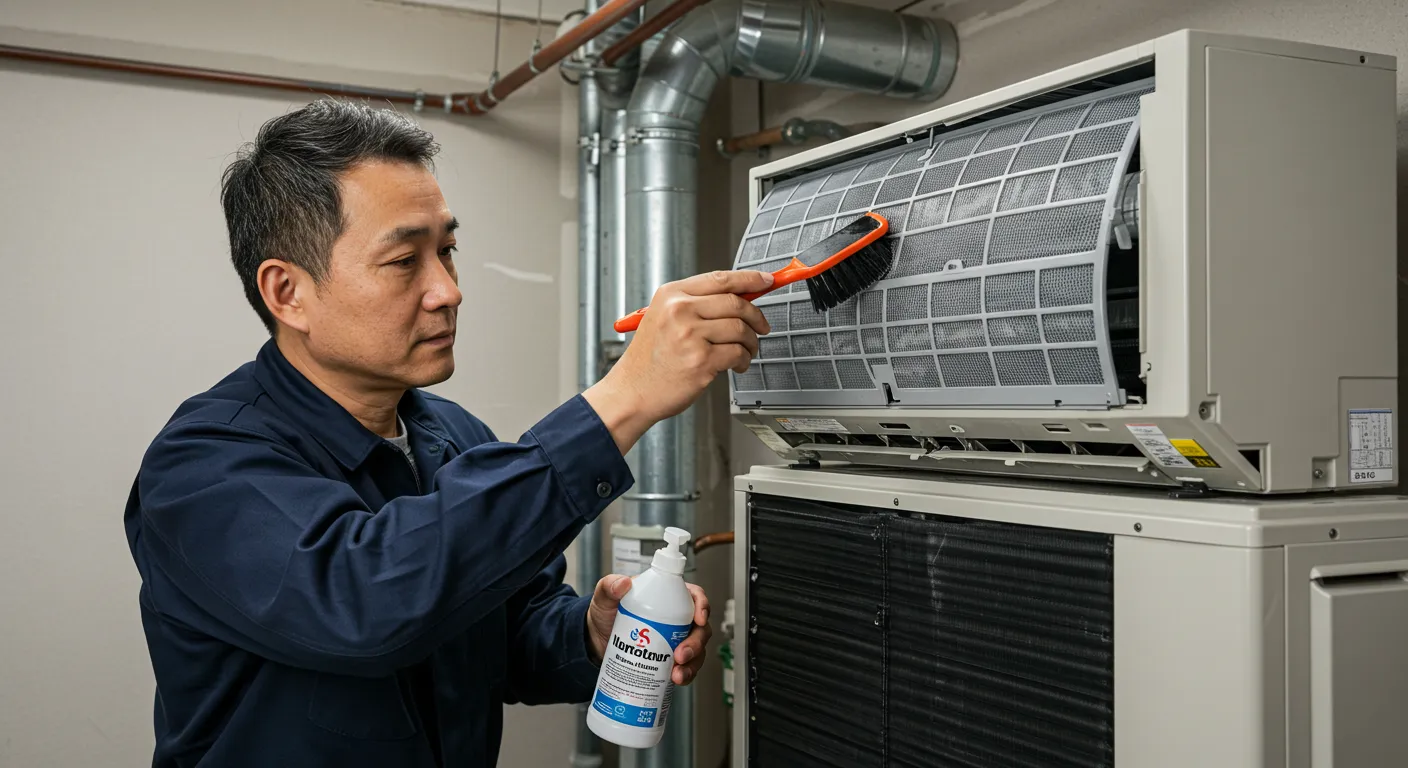AC Maintenance in Newhall, CA






AC maintenance for Newhall, CA homes, outlining why regular tune ups matter in a desert climate with smoke and dust, what a professional maintenance visit covers, common issues found during service, seasonal emphasis for spring and fall, and how memberships can simplify routine care. It also describes how technicians diagnose problems, typical repairs found during maintenance, the benefits of preventative maintenance, and practical homeowner tips to optimize system performance and extend equipment life in local conditions.

AC Maintenance in Newhall, CA
Keeping your air conditioner tuned and ready is essential in Newhall, CA where hot summers, seasonal Santa Ana winds, dust, and occasional wildfire smoke make reliable cooling and good indoor air quality a year round priority. Professional AC maintenance prevents mid-summer breakdowns, improves comfort, lowers energy use, and extends equipment life. This page outlines routine and seasonal maintenance services, common local problems, what a tune up includes, membership plan benefits, typical repair outcomes, and simple homeowner steps to protect your system.
Why AC maintenance matters in Newhall, CA
Newhall homes face unique stressors for cooling equipment. Prolonged high temperatures push compressors hard. Fine desert and valley dust clogs filters and coils faster than in coastal areas. Wildfire smoke and pollen increase indoor air contaminants and can shorten filter life. Regular maintenance addresses these local challenges before they become expensive failures, keeping your system operating safely and efficiently through peak demand months.
Common AC maintenance issues in Newhall, CA
- Dirty or clogged air filters - Leads to poor airflow, reduced efficiency, and frozen evaporator coils. Filters may need changing more often in dusty conditions.
- Restricted airflow - Caused by blocked vents, dirty blower wheels, or duct obstructions; results in uneven cooling and higher energy use.
- Dirty evaporator coils and condenser coils - Reduces heat transfer and forces the system to run longer.
- Low refrigerant or leaks - Causes weak cooling and can damage the compressor if not fixed.
- Thermostat calibration and control problems - Incorrect readings lead to short cycling or poor temperature control.
- Electrical component wear - Capacitors, contactors, and wiring degrade over time and create safety or reliability risks.
- Condensate drain clogs - Backed up drains can cause water damage or system shutdowns.
What a professional AC tune up includes
A complete AC maintenance visit typically covers a detailed checklist designed to catch small problems early and optimize performance. Standard tune up tasks include:
- Filter inspection and replacement or cleaning, matched to your system and indoor air quality needs.
- Evaporator and condenser coil cleaning to restore efficient heat transfer.
- Condensate drain inspection and cleaning to prevent clogs and water damage.
- Refrigerant level check and leak detection; pressure testing and diagnostics when needed.
- Airflow measurement and basic duct inspection to identify restrictions.
- Thermostat calibration and control verification to ensure accurate temperature control.
- Electrical safety inspection including voltage and amp draw checks, and testing capacitors and contactors.
- Blower motor and wheel inspection and lubrication where applicable.
- System performance test including temperature split, startup and shutdown behavior, and run-time analysis.
- Written summary of findings and recommendations, with priority items flagged.
Seasonal emphasis: Spring tune ups focus on cooling readiness and refrigerant levels. Fall visits prepare heat pumps or dual systems for efficient heating months.
Membership plans and recurring maintenance
Maintenance plans typically bundle recurring tune ups and additional benefits to keep systems on schedule and reduce unexpected costs. Common features of membership plans include:
- Two scheduled visits per year timed for peak needs (spring and fall).
- Priority service scheduling during busy seasons.
- Discounted rates on repairs and replacement parts.
- System health reports after each visit documenting performance and recommended actions.
- Reminder service to help maintain consistent care and compliance with manufacturer warranty requirements.
Enrolling in a maintenance plan establishes a predictable service cadence and helps prevent missed inspections that can lead to costly emergency repairs.
How technicians diagnose problems during maintenance
Technicians combine visual inspection with diagnostic measurements to pinpoint issues quickly:
- Visual inspection of components and refrigerant lines to spot corrosion, oil stains, or physical damage.
- Refrigerant pressure testing and temperature split measurement to confirm proper charge and heat exchange performance.
- Airflow testing with static pressure or velocity readings when airflow concerns are present.
- Electrical testing for proper voltage, current draw, and component function.
- Leak detection for refrigerant loss and targeted repair recommendations.This structured approach identifies both immediate safety or comfort concerns and longer term wear items that should be addressed.
Typical repairs and solutions found during maintenance
When maintenance uncovers issues, common solutions include:
- Filter upgrades and more frequent replacements to improve airflow and indoor air quality.
- Coil and condenser cleaning or restoration to recover efficiency.
- Refrigerant leak repair and recharge when necessary, followed by system retest.
- Replacement of worn electrical components such as capacitors, contactors, or relays to restore reliable startup and operation.
- Blower motor or fan repair and balancing to correct airflow problems.
- Condensate drain repair or rerouting to eliminate recurring clogs.These repairs restore performance and often avoid larger failures like compressor damage.
Benefits of regular preventative AC maintenance
- Improved system efficiency and lower energy bills through cleaner coils and correct refrigerant charge.
- Fewer mid-season breakdowns because wear and failure points are caught early.
- Longer equipment life by reducing strain on major components.
- Consistent comfort and even temperature control throughout the home.
- Better indoor air quality by keeping filters and coils clean, especially important with dust and wildfire smoke in the area.
- Documentation that supports manufacturer warranties and resale value.
Homeowner maintenance tips for Newhall residences
- Change or inspect filters every 1 to 3 months; more often if there are pets, wildfire smoke, or heavy dust.
- Keep the outdoor condenser clear of leaves, debris, and landscape growth; maintain at least a 2 foot clearance.
- Shade the outdoor unit when possible without restricting airflow to reduce load during hot spells.
- Monitor for unusual noises, longer run times, or rising energy bills and note them for the next service visit.
- Maintain attic insulation and duct sealing to reduce system workload and improve comfort.
Regular professional maintenance tailored to Newhall conditions, combined with common sense homeowner care, is the most effective way to keep cooling systems reliable and efficient. Maintenance plans provide predictable, recurring service that aligns with seasonal needs and protects system performance so your home stays comfortable when it matters most.



